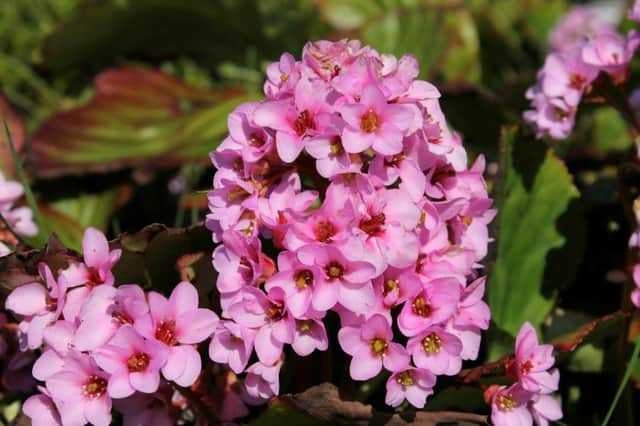What's this ear?


Elephants have big ears to help them regulate their temperature; bergenias have ‘ears’ to help set off their flowers, but is that any reason to label the family with the nickname of ‘elephant’s ears’?
There’s nothing wrong with the name bergenia; it’s probably more appropriate than ‘elephant’s ears’, but ask 99 out of 100 gardeners to name a bergenia, and the first name to pop into their brains and out of their mouths is – ‘elephant’s ears’.
Advertisement
Hide AdAdvertisement
Hide AdSo it is with B cordifolia which, during the depths of winter, flowers above its leathery leaves. If it’s really cold, those leaves might well have turned almost purple while the blooms remain a vibrant pink.
Thankfully, bergenias don’t seem to find the sobriquet a problem, and they carry on doing what they do best – producing richly-coloured, big, bold, foliage and topping this with attractive flowers.
These are plants which like sun, but which will settle for partial shade. Some leaves tend to get a bit tatty after a hard winter, so just pull them off in spring and stick them in the compost bin. The plants won’t mind.
Most bergenias are evergreen perennials with leathery rounded leaves which can sometimes measure as much as a foot across. They are there all year round, changing colour depending on the temperature. Some are vibrant green while others can be as vivid as the stems of fresh rhubarb.
Advertisement
Hide AdAdvertisement
Hide AdBergenias are undemanding, growing happily as long as the soil is not too dry. They can tolerate heavy, clay soils – their colour is often better in less fertile soil while spring foliage and flower is more impressive in richer conditions.
To keep them looking their best, nip off old foliage as it turns brown so plants look smart before the spring bulbs flower. For the best results, apply a decent mulch every year.
When clumps start to show their age and begin to get straggly, lift them, discard the older woody growth and replant the young strong shoots.
They are surprisingly quick at producing plenty of new growth – ‘elephant’s ears’ of course.